Save with our Tax Refund Sale - Shop Now
Speakers
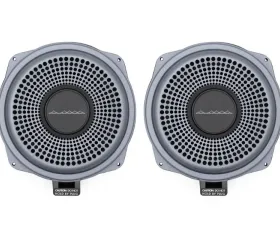
Bavsound Ghost Subwoofer Upgrade w/ JBL Audio Toyota Supra MKV 2020-2023
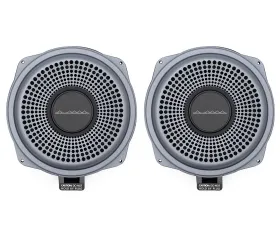
Bavsound Ghost Underseat Subwoofer Upgrade w/ Screws BMW 2 Ohm

Bavsound Ghost Underseat Subwoofer w/ Screws BMW 8 Ohm
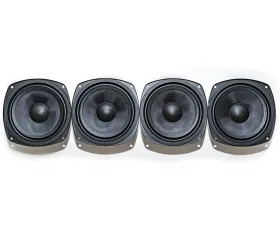
Bavsound Rear Deck Subwoofer Replacement Kit (4 Speakers) BMW 7 Series E38 1995-2001
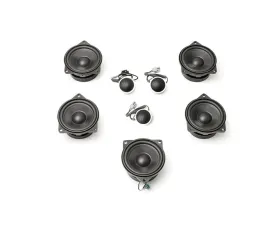
Bavsound Stage One Plug & Play Speaker Upgrade BMW 3 Series G20 | G80 (w/ Standard Hi-Fi)
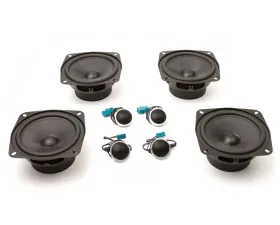
Bavsound Stage One Plug & Play Speaker Upgrade BMW E38 Sedan 1995-2001
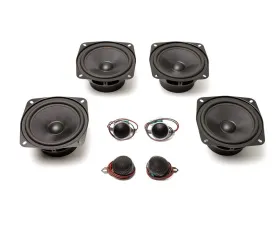
Bavsound Stage One Plug & Play Speaker Upgrade BMW E39 Sedan | Wagon 1996-2003
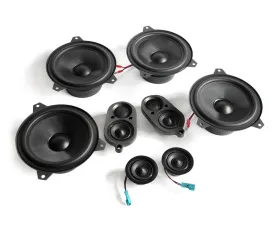
Bavsound Stage One Plug & Play Speaker Upgrade BMW E46 Coupe w/ Harman Kardon
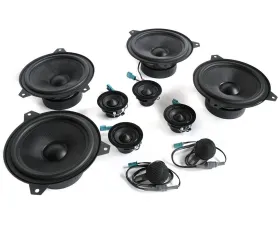
Bavsound Stage One Plug & Play Speaker Upgrade BMW E46 Sedan | Wagon (w/ Standard Hi-Fi)
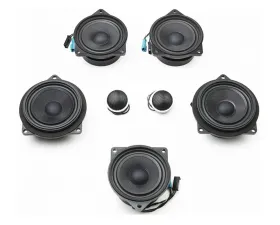
Bavsound Stage One Plug & Play Speaker Upgrade BMW F30 | F31 | F34 | F80 (w/ Standard Hi-Fi)
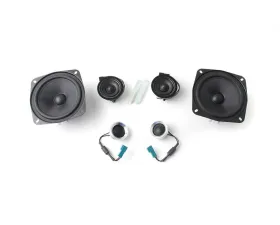
Bavsound Stage One Speaker Upgrade BMW E36 Convertible (w/ Standard Hi-Fi) 1996-1999
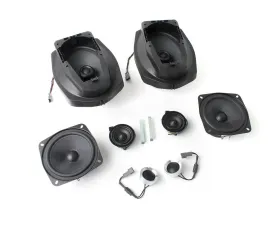
Bavsound Stage One Speaker Upgrade BMW E36 Coupe | Sedan (w/ Harman Kardon) 1996-1999

Bavsound Stage One Speaker Upgrade BMW E36 Coupe | Sedan (w/ Standard Hi-Fi) 1996-1999
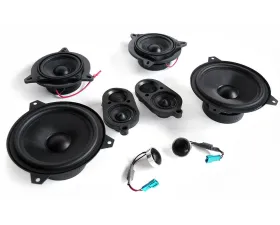
Bavsound Stage One Speaker Upgrade BMW E46 Convertible (w/ Harman Kardon)
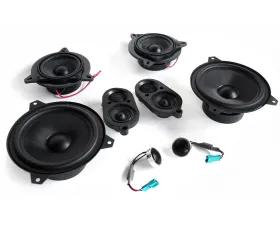
Bavsound Stage One Speaker Upgrade BMW E46 Convertible (w/ Standard Hi-Fi)
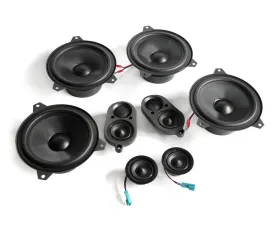
Bavsound Stage One Speaker Upgrade BMW E46 Coupe (w/ Standard Hi-Fi)

Bavsound Stage One Speaker Upgrade BMW E46 Sedan (w/ Harman Kardon)
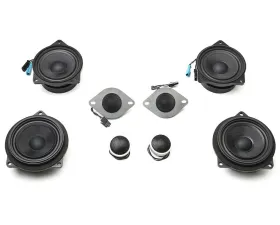
Bavsound Stage One Speaker Upgrade BMW E90 Sedan (w/ Standard Hi-Fi)
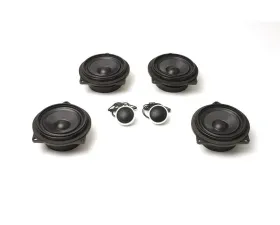
Bavsound Stage One Speaker Upgrade BMW E92 | E93 Coupe/Convertible (w/ Standard Hi-Fi) 2011-2013
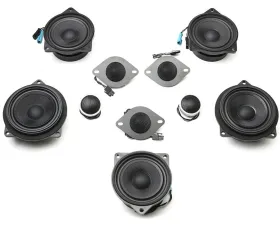
Bavsound Stage One Speaker Upgrade BMW F10 Sedan (w/ Standard Hi-Fi)

Why Should I Upgrade My Car’s Speakers?
It is no secret that for car enthusiasts, the best “speaker” should be the engine. For long drives and a bit of relaxation, music is almost imperative. Unless you own a Bentley, chances are you don’t have a 14-speaker, 1,100-watt Naim sound system playing Katy Perry in the background while you make mincemeat of Route 66. Music is a big part of being a car enthusiast. Don’t believe us? How many songs are there about cars and driving? Music is great thing while letting the miles pass by. It relaxes and soothes. This is the reason why cars should have speakers reproducing our favorite songs as loudly and as accurately as possible in a car.
Most new cars come with a very basic set-up of 4 to 6 speakers and that’s it. It is also very doubtful that the speakers in older cars, or project cars, will play loud if even they play at all. Additionally, most new cars have speakers that sound muddy or muffled. BMW, Audi, and Mercedes-Benz are no exception to this. This is a result of a car companies’ accountants being victorious over passionate sound engineers. Budget constraints say that the car stereo is good enough so long as there is sound coming out of the speakers.
Which Speakers Should You Get?
Before your car’s stereo sounds better, it is important to understand that speakers are categorized by size. This is because of beaming. Beaming is a phenomenon of loudspeakers where the normal dispersion characteristics of the device breakdown and higher frequencies begin to be projected straight out from the device rather than dispersing into the sound field. This is why most competition cars that battle it out as IASCA, the International Auto Sound Challenge Association, are composed of 2-way or 3-way speakers and a subwoofer. Quite simply, you can’t expect a 10-inch speaker to play high frequencies very well as you don’t expect a 3-inch speaker to play bass.
Here are the speaker categories that will surely make your car stereo better.
Tweeters
At the high end of the sound spectrum, we've got tweeters that get their name from a high frequency sounds birds produce. The tweet. Tweeters typically range from 2 kHz to 20 kHz, although some specialty tweeters may be as high as 100 kHz – which does not matter as most humans don’t hear higher than 16 kHz.
Traditionally, tweeters were designed more or less the same way as other speakers — just smaller. The trouble is that the sound at that frequency is pretty directional, which means that the highs in your music sound best when the tweeters are pointing right at you. Modern tweeters are starting to adapt a dome version that uses a soft dome diaphragm made of polyester film, silk or polyester fabric that has been impregnated with polymer resin. Dome tweeters are capable of providing a wider range of sound distribution. Most tweeters by Rockford Fosgate and MB Quart are of a dome configuration.
Mid-range Speakers
Mid-range speakers are designed to handle the 'medium' range of spectrum from 500 Hz to 4 kHz. This is probably the most important frequency range due to the most audible sounds produced here, such as musical instruments and human voice. If you play songs with dominant vocals like Michael Buble or Dianne Reeves, it’s important to have a potent mid-range speaker.
Since the human ear is most sensitive to the mid-range frequency, the driver can stay at a lower power while still providing good sound in terms of quality and volume. Because mid-range speakers are unable to produce an extreme low or high spectrum, they often sound dull or flat and need the support of a woofer or tweeter to get the full sound level. Most mid-range speakers are 2.5” to 5” in diameter.
Mid-bass Speakers
Mid-bass speakers are designed to bridge the sound of the lowest and highest frequencies. Mostly sized from 5.25” to 8”, they can play from 60 Hz to 3,000 Hz. Most car speakers use a 6.5” mid-bass/mid-range speaker that plays from 80 Hz to 3,000 Hz where a tweeter can take over – negating the need for mid-range drivers.
Additionally, most factory speakers come in 6.5” sizes that are placed in the lower part of the doors. This is considered the most universal size as it is mostly plug and play with most vehicles. Most old cars might have a 5.25” speaker mount in their door. BMW’s are unique because it has thin 8” mid-bass speakers under each front seat. Luckily, Rockford Fosgate has all of these sizes – even complete replacements of stock BMW speakers.
Subwoofers
It’s all about the bass. Meghan Trainor might be onto something when she sang this because the bass frequency gives body to the music, making it more enjoyable to listen to. And with bass, you just want to bump your head or dance. This frequency is a bit hard to reproduce in the car especially if it does not come with a dedicated subwoofer. Even cars that come with 8” or 10” subwoofers cannot hold a candle to aftermarket subwoofers once done right.
Subwoofers are only capable of producing tones below 200 Hz – but you shouldn’t really play them above 70 Hz because that is what a mid-bass driver is for. Their cones are made of pressed paper or rubber and are often mounted inside a wooden enclosure. Although the human ear can only pick up a frequency as low as 30 Hz, subwoofers working at even lower frequencies can only be felt if they are not heard. Because the main job of a subwoofer is to move air. Typically, they are placed in their own isolated enclosure and provide a low-level thump that you just can't get with standard woofers.
Perhaps the only disadvantage to installing a subwoofer is the loss of space because of its enclosure. Subwoofers come in many sizes from 8” to monstrous 24”, well, monsters. Vivid Racing also carries pre-loaded enclosures, like those from Bazooka, that will fill your car, ATV/UTV, or boat with bass to bump to your tunes with.
Marine/Active Lifestyle Speakers
If you drive UTVs/ATVs or if you have a boat and you want your music blaring without ever having the concern of your speakers being destroyed due to water or mud, these are for you. Marine speakers are speakers that are better equipped for the water. Not only are they generally water resistant, but they are also more durable. Marine speakers are designed to withstand different exposures to water, humidity and climate. Even if you prefer to place the speaker inside your watercraft, there are still subtle differences needed to keep it running all the way.
Marine speakers are designed to withstand harsh environments and salt corrosion. There's no doubt that they're more durable than a car speaker that's not really made to withstand that stuff. Why would that be? It's not like a car speaker gets salt corrosion or is exposed to direct sunlight and water.
Aside from these speaker categories, speakers are often sold in sets of 2-way, 3-way, or coa-axial speakers. And most of them come with a crossover. But what does this all mean?
2-way Speakers
A 2-way speaker has two types of drivers which are known as a woofer and tweeter. The woofer is a speaker built exclusively for low-frequency sounds, while the tweeter is designed for high-frequency sounds. Most factory speakers are set-up like this: woofer in the door, tweeter on the dash or in an enclosure in the sail panel. This makes it easy to replace.
3-way Speakers
A 3-way speaker generates sound from three individual devices known as the mid-range, woofer and tweeter. This set produces more prominent bass mainly because the mid-range frequencies are played by a dedicated mid-range speaker. BMW’s are known for this set-up, albeit unconventionally. The mid-bass is set under the front seats, the 4” mid-range speaker in the upper doors, and 1” tweeters in each sail panel.
Coaxial Speakers
Coaxial speakers in automobiles are 2 loudspeakers in which the tweeter is mounted in front of the woofer, partially obscuring it. The advantage of this design is the ability to use a smaller area, hence their popularity in car audio. The low frequency sound waves from the woofer are not reduced too much by the drivers in their path. Most lower-end cars come with these speakers in both their front and rear doors. This is most probably the reason why you can’t hear concert levels of detail and volume in new cars. It is best reserved for rear-fill, either in the rear doors or the rear deck.
Crossovers
The crossover divides the input signal into two or more outputs of different frequency ranges, so that tweeters, speakers, and subs will each receive only the frequency range they were designed to play. Frequencies outside each specified range are attenuated or blocked. Every speaker system needs a type of crossover. Component speakers come with separate outboard crossovers, many with tweeter level selectors. Every full-range, coaxial speaker — with its tweeter mounted in front of the woofer cone — has a tiny crossover network built into it.
Most speaker systems come with a crossover because it is easier to install, plug & play. Some, like competition vehicles, use active crossovers and digital sound processors to adjust the timing and frequencies to their liking. And these are connected to the amplifiers. But that’s a story for another day.
Therefore, a new set of car speakers will provide that extra crispness and detail you are missing. Not to mention, more bass to add body to the sound. It is simply the best way to improve your car’s stereo sound. Dare we say it, upgrading your car’s speakers for better and louder ones will let you hear details in songs you never knew were there. If you want to hear Queen’s Bohemian Rhapsody in its full glory or if you ant to bop to bass-heavy Hip-Hop, upgrading your speakers is the only way to go.
Vivid Racing carries speakers from audio stalwarts like MB Quart, Rockford Fosgate, Bazooka, and more! Buy online or give one of our world-class professionals a call at 1-480-966-3040.

.jpeg?q=90&p=thumb&w=200&h=200)
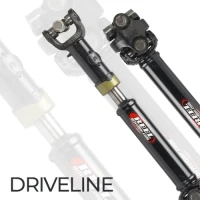






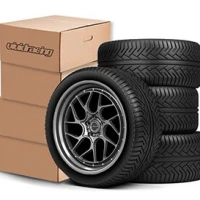

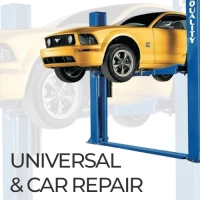
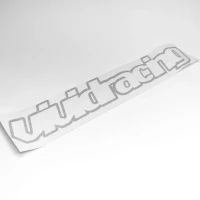
.jpeg?q=90&p=thumb&w=40&h=40) Brakes
Brakes  Driveline
Driveline  Electronics
Electronics  Handlebars & Controls
Handlebars & Controls  Package Deals
Package Deals  Wheel Accessories
Wheel Accessories  Wheels by Vehicle
Wheels by Vehicle  Tools and Maintenance
Tools and Maintenance  Universal & Repair
Universal & Repair  Vivid Racing Gear
Vivid Racing Gear 